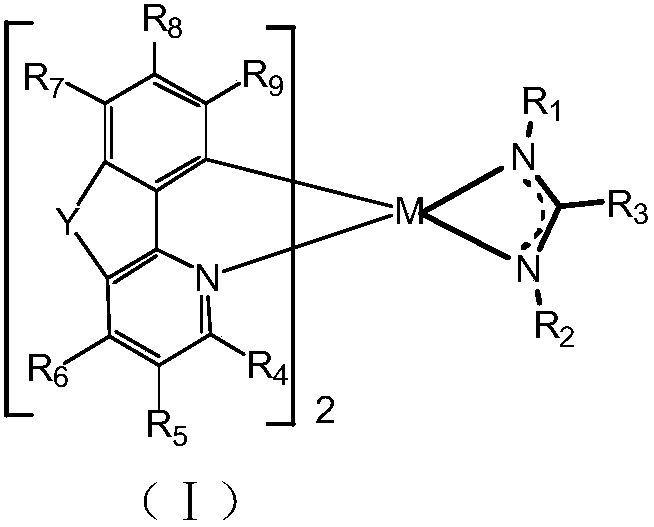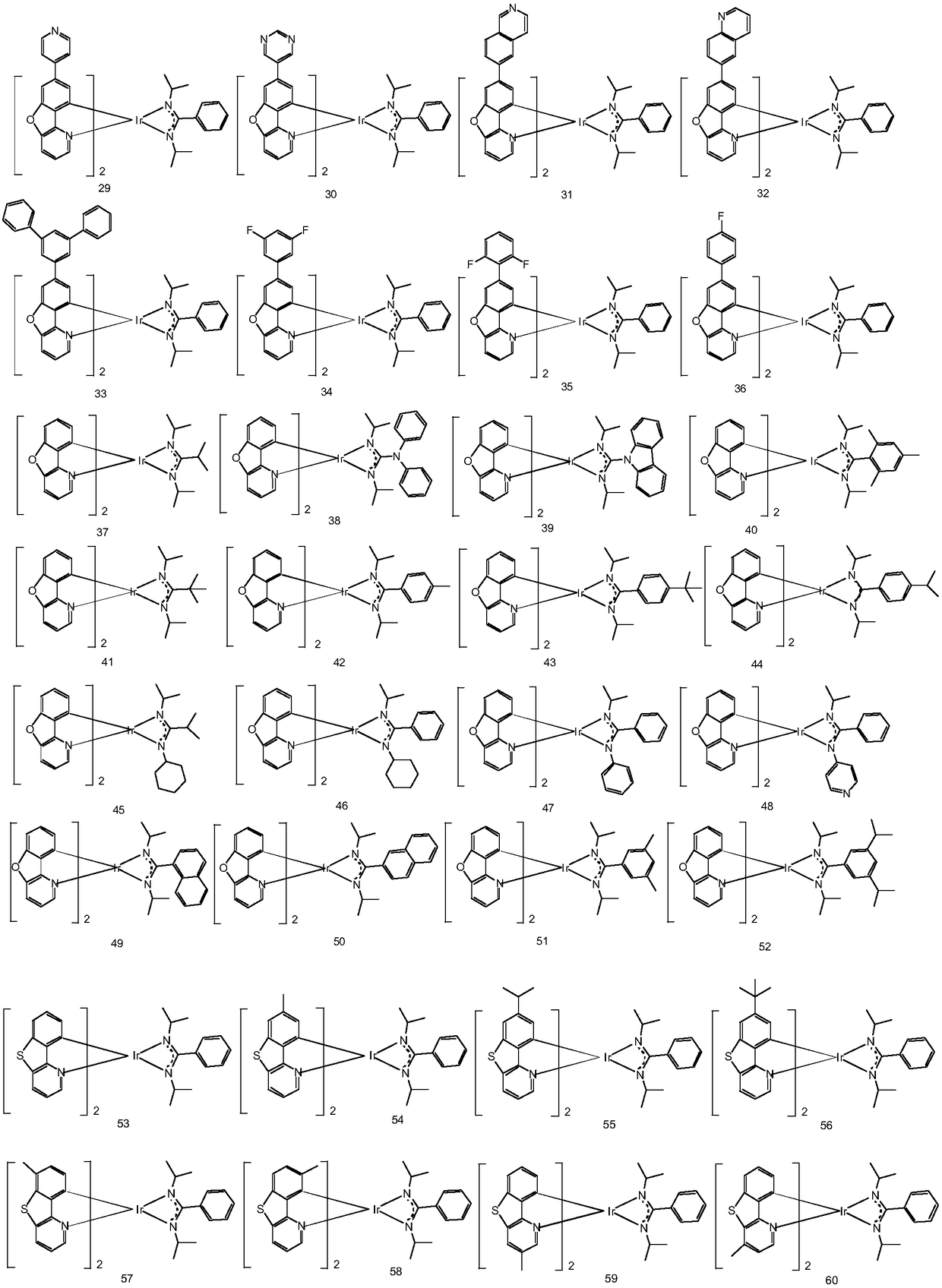Metal complex and OLED (Organic Light Emitting Device) thereof
A technology of organic light-emitting devices and metal complexes, which is applied in the fields of light-emitting materials, organic chemistry, and electric solid-state devices. It can solve problems such as low luminous efficiency, poor thermal stability, and low driving voltage, and achieve simple preparation methods and improved stability. , Increase the effect of the conjugated system
- Summary
- Abstract
- Description
- Claims
- Application Information
AI Technical Summary
Problems solved by technology
Method used
Image
Examples
Embodiment 1
[0072] Embodiment 1: the preparation of compound 1
[0073]
[0074] Preparation of Intermediate A-1
[0075] Compound a-1 (6.50g, 37.6mmol) was dissolved in tetrahydrofuran (140mL), and a hexane solvent and 2.5M n-butyl lithium (18mL, 45.1mmol) were added dropwise at -78°C, followed by stirring for 1 hour. After slowly adding trimethyl borate (13 mL, 56.4 mmol) dropwise, stirred for 2 h. Then 2M hydrochloric acid was added dropwise to neutralize, and the product was extracted with ethyl acetate and water. Recrystallization from dichloromethane and hexane gave compound b-1 (2.70 g, 47%). Weigh compound b-1 (19.20g, 125.5mmol), compound c-1 (35.62g, 125.5mmol), tetrakistriphenylphosphine palladium (11g, 10mmol) and potassium carbonate (84.2g, 609mmol), will weigh The reactant was dissolved in a solvent of toluene (1 L) / EtOH (200 mL) / distilled water (200 mL), and heated at 90° C. for 2 hours. Weigh compound d-1 (19.51g, 78mmol), heat at 200°C under the condition of Cu as ...
Embodiment 2
[0082] Embodiment 2: the preparation of compound 9
[0083] The b-1 in Example 1 was replaced by equimolar b-9, and the other steps were the same as in Example 1 to obtain the target compound 9 (5.13 g, 29%).
[0084]
[0085] Mass Spectrum m / z: 885.29 (calculated: 885.28). Theoretical element content (%)C 47 h 40 IrN 4 o 2 : C, 63.78; H, 4.56; Ir, 21.72; N, 6.33; O, 3.62 The measured element content (%): C, 63.79; H, 4.55; The above results confirmed that the obtained product was the target product.
Embodiment 3
[0086] Embodiment 3: the preparation of compound 105
[0087]
[0088] Preparation of Intermediate A-105
[0089] Compound a-105 (7.60g, 37.6mmol) was dissolved in tetrahydrofuran (140mL), and a hexane solvent and 2.5M n-butyllithium (18mL, 45.1mmol) were added dropwise at -78°C, followed by stirring for 1 hour. After slowly adding trimethyl borate (13 mL, 56.4 mmol) dropwise, stirred for 2 h. Then 2M hydrochloric acid was added dropwise to neutralize, and the product was extracted with ethyl acetate and water. Recrystallization from dichloromethane and hexane gave compound b-105 (2.95 g, 47%). Weigh compound b-105 (41.90g, 251mmol), compound c-105 (39.66g, 251mmol), tetrakis triphenylphosphine palladium (11g, 10mmol) and potassium carbonate (84.2g, 609mmol), the reaction The product was dissolved in a solvent of toluene (1 L) / EtOH (200 mL) / distilled water (200 mL), and heated at 90° C. for 2 hours. Weigh compound d-105 (15.62g, 78mmol), add triethyl phosphite (200mL) a...
PUM
 Login to View More
Login to View More Abstract
Description
Claims
Application Information
 Login to View More
Login to View More - R&D
- Intellectual Property
- Life Sciences
- Materials
- Tech Scout
- Unparalleled Data Quality
- Higher Quality Content
- 60% Fewer Hallucinations
Browse by: Latest US Patents, China's latest patents, Technical Efficacy Thesaurus, Application Domain, Technology Topic, Popular Technical Reports.
© 2025 PatSnap. All rights reserved.Legal|Privacy policy|Modern Slavery Act Transparency Statement|Sitemap|About US| Contact US: help@patsnap.com



